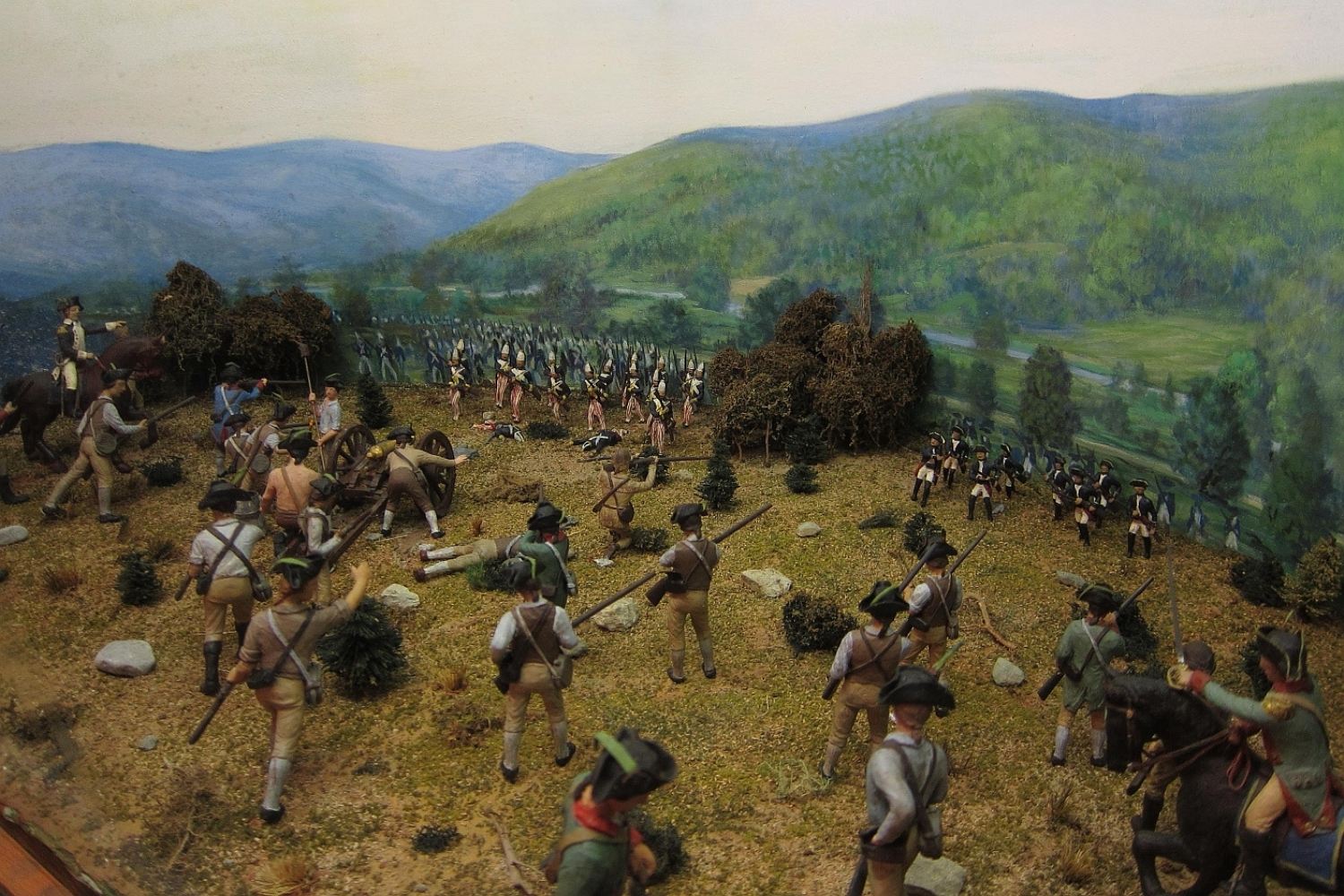
Did you know the Battle of Bennington was a turning point in the American Revolutionary War? This clash, fought on August 16, 1777, saw American forces, led by General John Stark, defeat British troops and their allies. The victory boosted American morale and disrupted British plans to divide the colonies. Why was this battle so significant? It wasn't just about the win; it was about the ripple effects. The triumph at Bennington helped convince France to support the American cause, which was crucial for ultimate victory. Curious about more details? Let's dive into 23 fascinating facts about this pivotal moment in history.
Key Takeaways:
- The Battle of Bennington was a crucial turning point in the American Revolutionary War, showcasing the bravery of American militia and the impact of clever strategies on the battlefield.
- General John Stark's leadership and the American victory at Bennington boosted morale and contributed to the eventual surrender of the British forces, highlighting the importance of local militia in achieving independence.
The Battle of Bennington: An Overview
The Battle of Bennington was a pivotal clash during the American Revolutionary War. Fought on August 16, 1777, it marked a significant turning point in the struggle for American independence. Here are some fascinating facts about this historic battle.
-
The battle took place near Bennington, Vermont, though the actual fighting occurred in present-day New York.
-
It was part of the Saratoga campaign, a series of battles aimed at gaining control of the Hudson River Valley.
-
The American forces were led by General John Stark, a seasoned veteran of the French and Indian War.
-
The British side was commanded by Lieutenant Colonel Friedrich Baum, a German officer serving under General John Burgoyne.
Key Players and Strategies
Understanding the key players and their strategies provides insight into how the battle unfolded and why it was so crucial.
-
General Stark's forces included local militia and volunteers, demonstrating the widespread support for the American cause.
-
Baum's troops were a mix of British regulars, German mercenaries (Hessians), Loyalists, and Native American allies.
-
Stark employed a clever strategy by dividing his forces to attack Baum's troops from multiple directions, creating confusion and chaos.
-
Baum's mission was to capture supplies and horses from the American depot at Bennington, which he believed was lightly defended.
The Battle Unfolds
The events of the battle itself were dramatic and intense, showcasing the bravery and determination of the American forces.
-
The battle began with a surprise attack by Stark's men on the morning of August 16, 1777.
-
Despite being outnumbered, Baum's troops put up a fierce resistance, utilizing their defensive positions.
-
Reinforcements for the British, led by Lieutenant Colonel Heinrich von Breymann, arrived later in the day but were also defeated by the Americans.
-
The battle lasted for several hours, with intense hand-to-hand combat and heavy casualties on both sides.
Aftermath and Impact
The aftermath of the Battle of Bennington had far-reaching consequences for the American Revolutionary War.
-
The American victory boosted morale and encouraged more men to join the fight for independence.
-
General Stark's leadership and tactics were widely praised, earning him the nickname "Hero of Bennington."
-
The defeat weakened General Burgoyne's forces, contributing to his eventual surrender at Saratoga.
-
The battle demonstrated the effectiveness of American militia forces against professional European soldiers.
Legacy and Commemoration
The legacy of the Battle of Bennington continues to be remembered and celebrated today.
-
The Bennington Battle Monument, a 306-foot stone obelisk, was erected in 1889 to commemorate the battle.
-
The battle is celebrated annually on Bennington Battle Day, a state holiday in Vermont.
-
The victory is considered a turning point in the Revolutionary War, leading to increased support from France and other foreign allies.
-
The battle is often cited as an example of the importance of local militia and volunteer forces in achieving American independence.
Interesting Tidbits
Here are some lesser-known facts and interesting tidbits about the Battle of Bennington.
-
The battle was fought in two phases, with the first phase ending in Baum's surrender and the second phase involving Breymann's reinforcements.
-
Many of the American soldiers were armed with hunting rifles, which were more accurate than the muskets used by the British and Hessians.
-
The battle's outcome was influenced by the weather, as heavy rain the night before made it difficult for Baum's troops to maneuver their artillery.
The Battle's Legacy
The Battle of Bennington wasn't just a skirmish; it was a turning point in the American Revolution. This clash showed the resilience and determination of the American forces. The victory boosted morale and proved that the Continental Army could stand up to British forces. It also disrupted British plans, making it harder for them to control the region.
The battle's impact went beyond immediate military gains. It inspired more people to join the fight for independence. The success at Bennington demonstrated the effectiveness of local militias and their crucial role in the war effort.
Understanding these facts about the Battle of Bennington helps us appreciate the sacrifices made and the strategic brilliance that led to American independence. This battle, though often overshadowed by larger conflicts, played a vital role in shaping the course of history.
Frequently Asked Questions
Was this page helpful?
Our commitment to delivering trustworthy and engaging content is at the heart of what we do. Each fact on our site is contributed by real users like you, bringing a wealth of diverse insights and information. To ensure the highest standards of accuracy and reliability, our dedicated editors meticulously review each submission. This process guarantees that the facts we share are not only fascinating but also credible. Trust in our commitment to quality and authenticity as you explore and learn with us.
